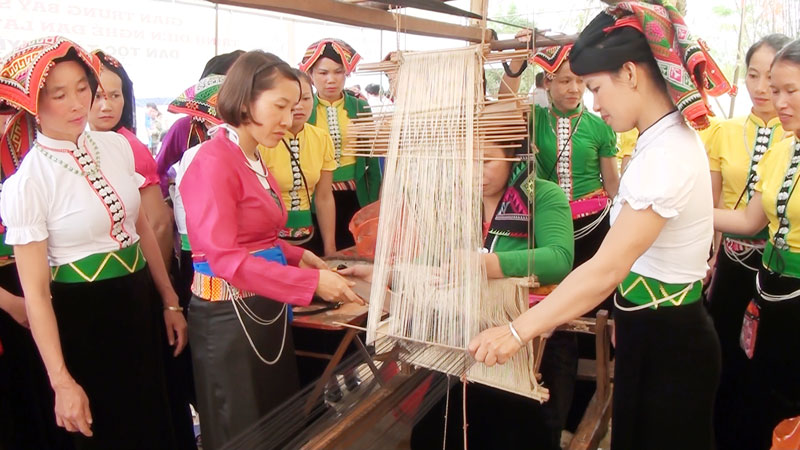



With their own experience, the artists in
Muong Chieng commune (Da Bac) preserve and promote the quintessence of weaving brocade of the Tay ethnic group for their
next generations.
The patterns on the costumes of the Tay
ethnic minority are slightly different from those of the Thai ethnic people.
Ms. Ha Thi Huyen, Chieng village, Muong Chieng commune said: "If the
brocade patterns that Thai ethnic people use are often the colors like white,
red, yellow, green, etc., being highlighted and symmetric with each other to
reflect the idea of lunisolar harmony. Meanwhile, the layout of brocade of the Tay
ethnic group appears more and more rhombuses with the surrounding borders
forming the decorative valance. In the rhombuses, there are patterns of plants,
fruits, expressing the love of nature and people in the ancient cultural
beliefs of the Tay ethnic people".
Weaving brocade brings pure value, is the
cultural crystallization of Tay ethnic people. However, in order to preserve
this long – lasting traditional culture, Muong Chieng commune as well as many
other localities are always facing difficulties. Sitting next to the loom, Ms.
Huyen shared: "At present, in Muong Chieng commune in particular and in Da
Bac district in general, traditional handicrafts are no longer maintained.
There are a few artists keeping the handicrafts, most of them are at high ages
and have difficulties in training the jobs for their offspring. In addition,
most of the younger generations and offspring of the Tay ethnic group are not
aware of the role and traditional cultural value of traditional handmade
weaving. Therefore, they hardly know and take care of the weaving jobs. The
number of people learning and practicing is not high; the number of looms is
limited.
Despite facing many difficulties and
challenges, but with passion, many weavers here are trying hard to preserve and
find a place for traditional weaving of their ethnic group. In addition to
actively propagating to the younger generations about the consciousness of
preserving the national culture, the human values contained in each textile
product. Everyday, taking advantage of the free farming time, the women and
ladies who have much experience in weaving visit the villages and hamlets to
mobilize other women to learn and train the job. Besides, in order to meet the
various demands of the users, textile products are becoming much more diverse.
Besides traditional products, there are many popular products such as bags,
hats, phone bags ... with many colors and patterns. Thus, weavers know the
combination of ancient culture and modern values to create many unique
products, colors suitable for tastes and aesthetics of users.
Mr. Xa Van Hung, Chairman of Muong Chieng
Commune People's Committee said: "The preservation and development of
brocade weaving is not only contributing to preserving traditional cultural
symbols of the Tay ethnic group, but also has an important meaning in the local
tourism development strategy, In order for traditional weaving products to
reach out to many domestic and international markets, it is necessary to have
investment policies, promote the advertisement and introduce the products so
that weaving brocade is becoming more and more popular, contributing to honor
the beauty and traditional cultural identity of Tay ethnic people. "